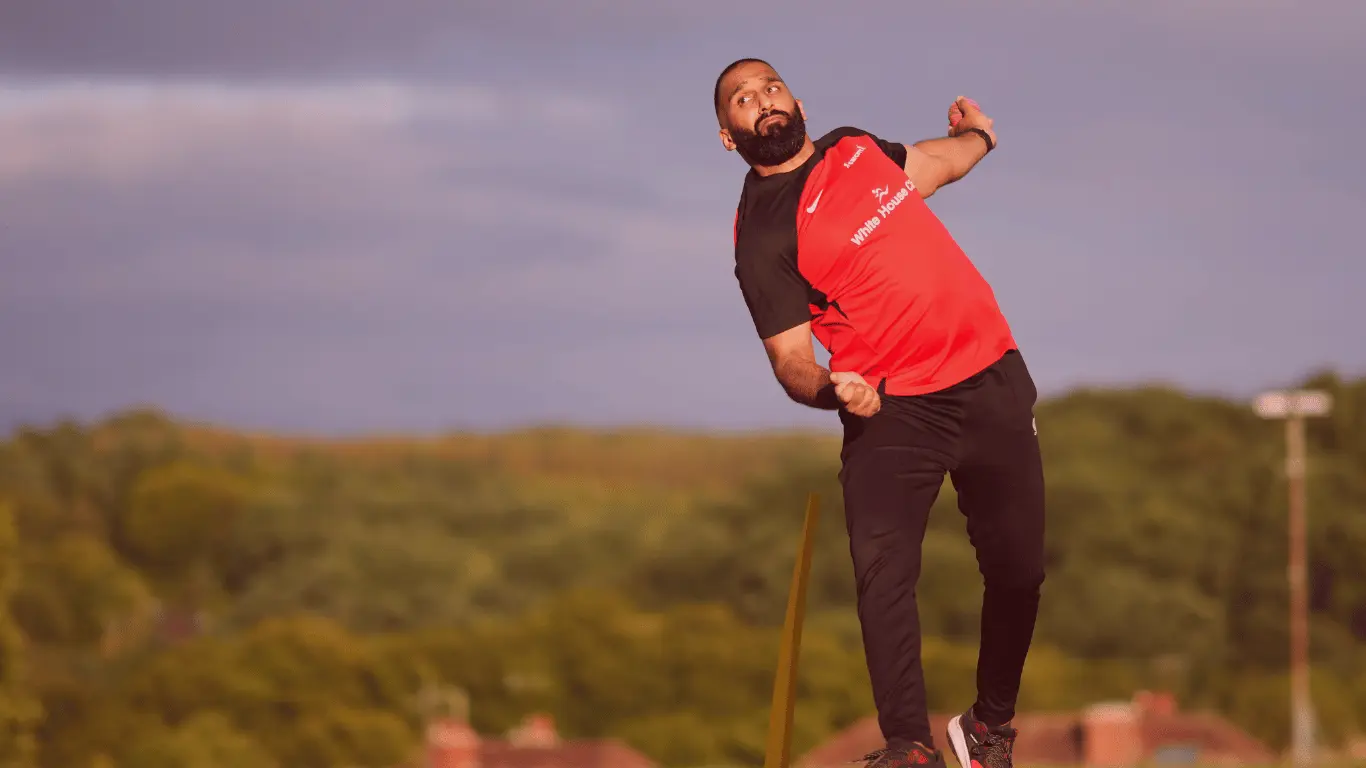How Thoracic Mobility helps Hip-Shoulder separation
When cricketers talk about power—whether it’s clearing the ropes with the bat or bowling rockets with the ball—there’s often a lot of focus on the hips, the core, or even the shoulders. But one area that often gets overlooked is the thoracic spine, or mid-back. It’s not the flashiest part of the body, but it plays a huge role in generating rotational power, and without it working properly, your performance will almost certainly take a hit.
In this article, we’re going to explore what the thoracic spine actually is, how it affects your cricket, and—most importantly—what you can do to improve its mobility and unlock more power.
What is the thoracic spine?
Let’s start with the basics. Your spine is made up of three main sections:
- Cervical spine – this is essentially your neck
- Thoracic spine – the mid-to-upper back
- Lumbar spine – your lower back
The thoracic spine sits right in the middle of it all, and it’s built to rotate, flex, and extend. This means it should be able to twist, round forward, and arch back. Unfortunately, for a lot of cricketers—and people in general—this area becomes stiff and immobile. Modern life, with all its sitting, scrolling, and slouching, often means the muscles around the thoracic spine become tight, limiting your ability to move freely.
When this happens, the body has to find that movement elsewhere, usually from the lumbar spine (your lower back). That’s when you start seeing things like back pain, side strains, and poor posture—all things that will hold back your performance and increase your injury risk.
Why thoracic mobility matters in cricket
The thoracic spine is involved in almost every powerful movement in cricket. Whether you’re a bowler, a batter, or a fielder, the ability to rotate through the mid-back is essential for efficient movement and force transfer.
Bowling
In fast bowling especially, there’s a huge demand on the body to rotate and extend during the delivery stride. If your thoracic spine is tight, your lower back will try to compensate, leading to excessive arching and an increased risk of pain or injury - such as a stress fracture
What’s more, poor mobility can also restrict how smoothly you rotate through the action. Instead of a clean, fluid delivery, you end up with awkward lateral movements that can lead to side strains and inconsistency.
Batting
When you watch top batters strike the ball cleanly, it often comes down to hip–shoulder separation—the ability to rotate the shoulders independently from the hips. This creates a sort of “whip” effect that generates power without relying on brute strength. Here is a link to an article explaining the biomechanics behind power hitting.
But if the thoracic spine is stiff, your whole upper body moves as one unit. You can’t separate the hips from the shoulders, and instead of a technically sound swing, you’re left with a big, uncontrolled swipe. It might work occasionally, but it’s not reliable—and it won’t get you far against quality bowling.
Two exercises to improve thoracic mobility
Fortunately, there are some simple, effective ways to start freeing up the thoracic spine. Below are two mobility drills you can add to your weekly training. Done consistently, they’ll help you move better, feel looser, and generate more rotational power.
1. Half eagle rotation
This is a great floor-based drill that targets pure thoracic rotation while keeping the lower back stable.
- Lie on your side with your top knee resting on a foam roller or cushion—this helps lock your lumbar spine in place.
- Your bottom arm rests out in front, and your top arm goes behind your head, elbow pointing up.
- Keeping your top knee pressed down, rotate the elbow back toward the floor behind you.
- The goal isn’t to reach the floor, but to feel a controlled stretch through the upper back.
Do this slowly, with control—6 to 8 reps per side. If your knee lifts off the roller, it means your lower back is taking over, so reset and keep it honest.
2. Kneeling T-spine opener
This is a more upright version that brings your core into play while encouraging good rotation.
- Get into a half-kneeling position (one knee on the floor, the other foot forward).
- Place the hand opposite your front leg on a wall or something solid.
- With your free hand, rotate around your body, trying to open up the chest.
- The key here is keeping your hips and knee stable—don’t twist through the lower back.
To get even more out of this movement, focus on your breathing. Take a deep breath in at the start, and breathe out as you rotate. This helps relax the muscles around the rib cage and can unlock more range.
Final thoughts
If you want to be a more powerful cricketer—whether that means hitting harder, bowling faster, or moving more efficiently—don’t overlook your thoracic spine. It might not be the most obvious area to work on, but it’s a key link in the chain of rotation and power.
Adding just a few minutes of thoracic mobility work to your weekly routine can lead to noticeable improvements in your technique, performance, and overall comfort. Combine it with our hip mobility guide (part one of this series) and stay tuned for part three on shoulder mobility, coming soon.
For a complete plan, check out the Cricfit mobility and strength programmes—designed specifically to help cricketers move better, feel better, and play at their best.

















